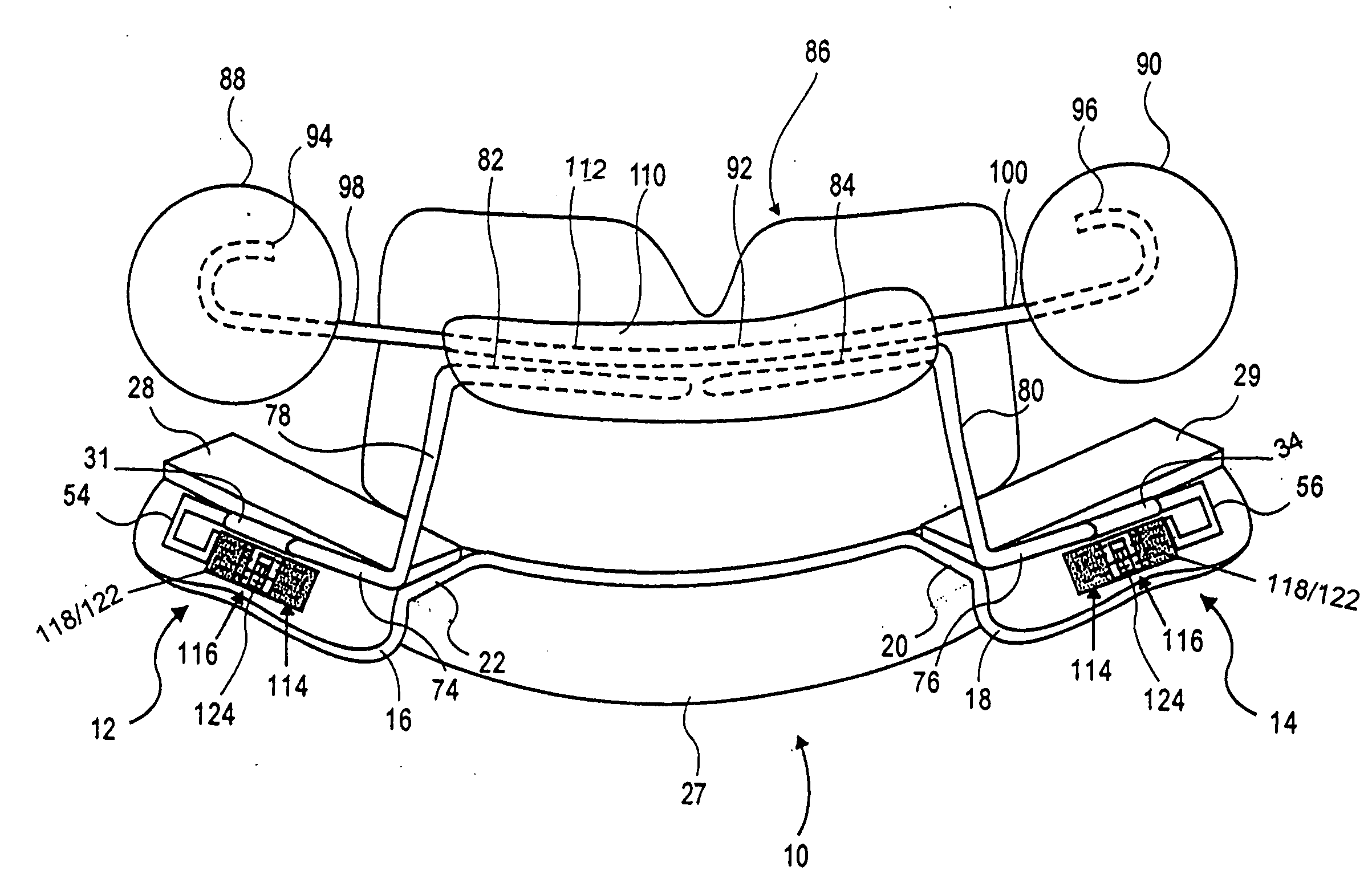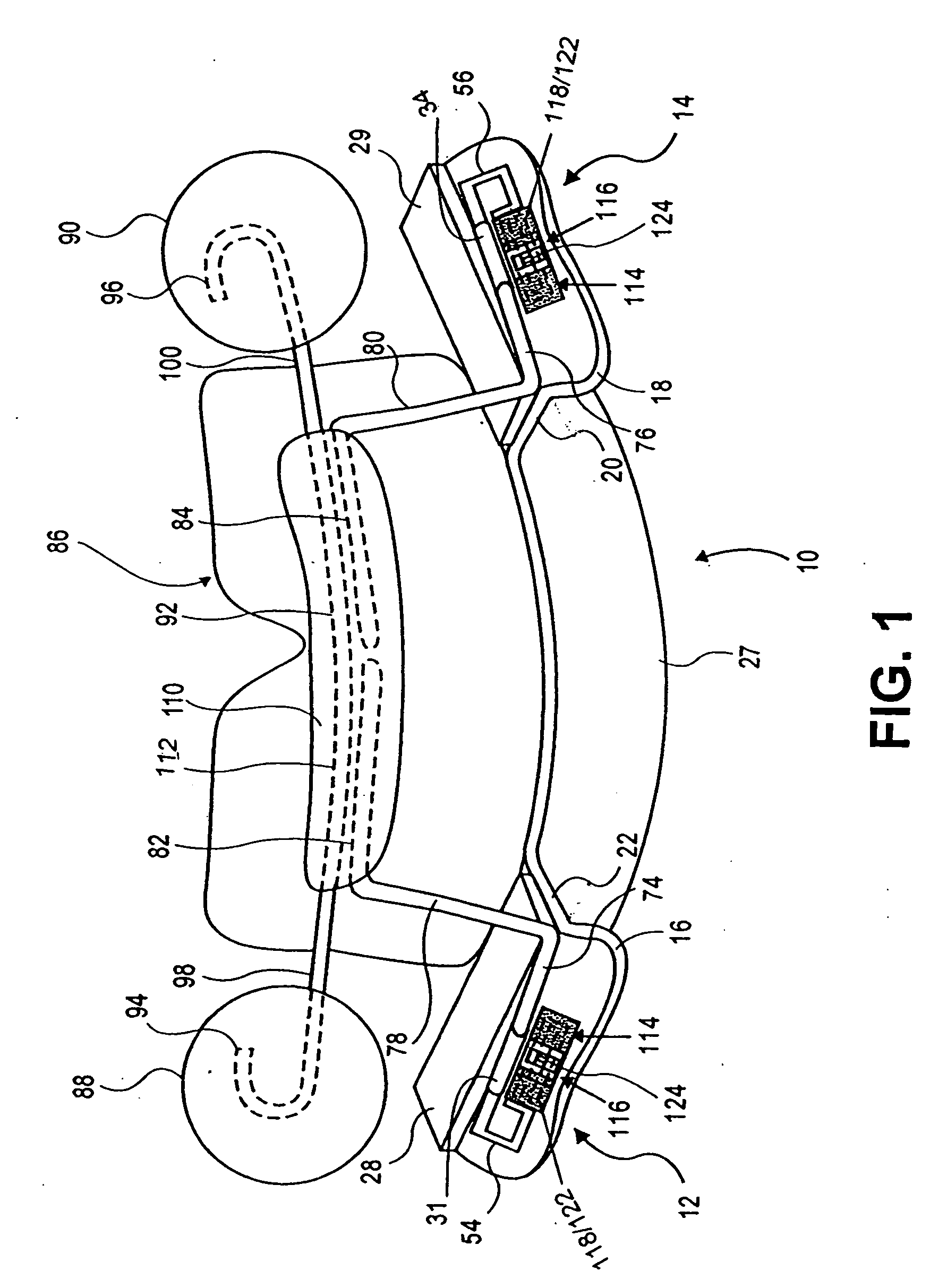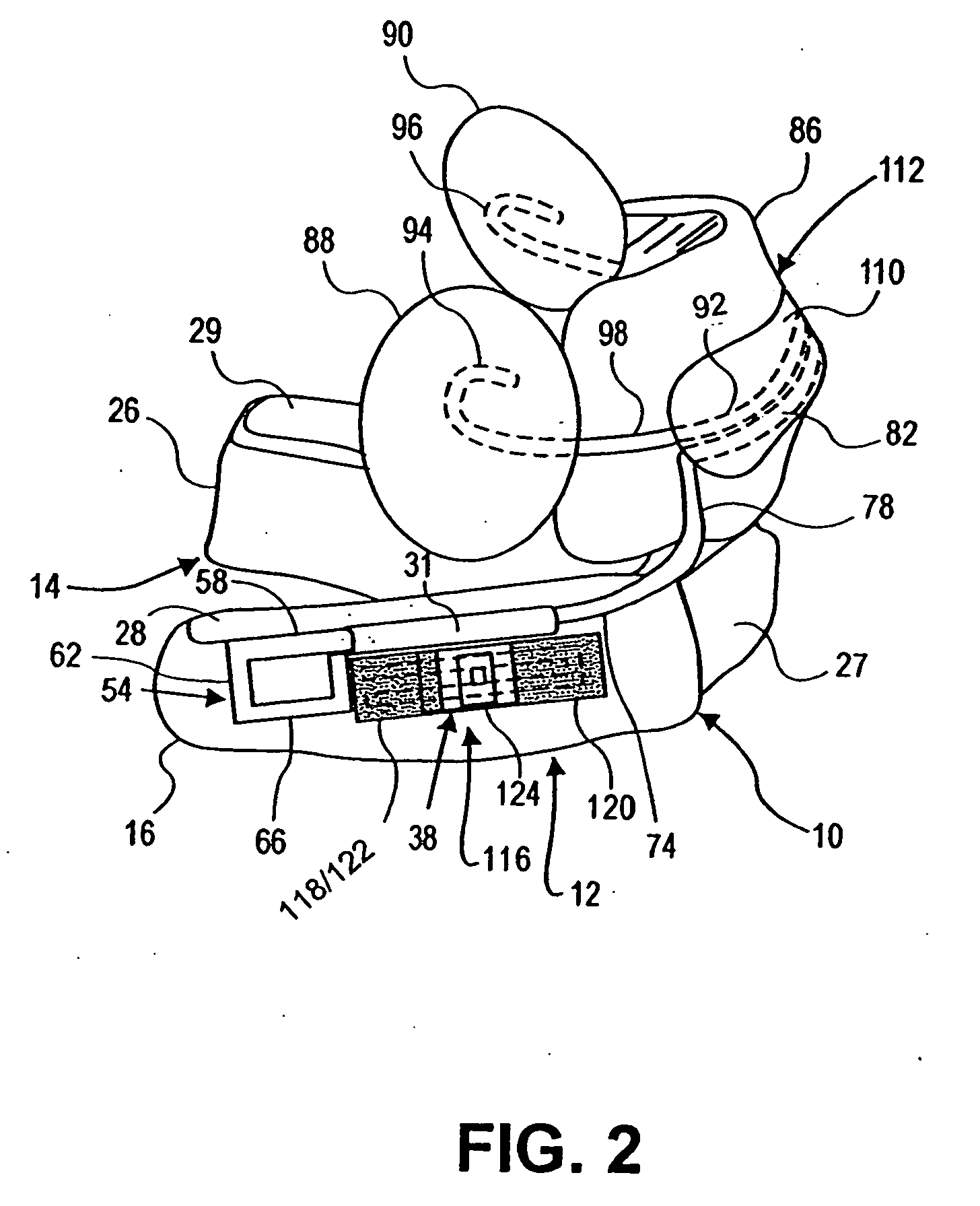Method for treating sleep apnea
a technology of nasal dilator and anti-snoring device, which is applied in the direction of snoring prevention, non-surgical orthopedic devices, other nursing devices, etc., can solve the problem of reducing the resistance of airflow through the pharyngeal region
- Summary
- Abstract
- Description
- Claims
- Application Information
AI Technical Summary
Benefits of technology
Problems solved by technology
Method used
Image
Examples
Embodiment Construction
—FIGS. 1-4
[0043] A preferred embodiment of a nasal dilator and anti-snoring device according to the invention is illustrated and FIG. 1 (anterior view), FIG. 2 (lateral view), FIG. 3 (posterior view), and FIG. 4 (top view). The device has a base unit 10, which fits over the lower teeth. It is constructed of thermoplastic material, which is heat molded over a dental model\ of the patient's teeth. In the preferred embodiment, the thermoplastic material used is 3 mm thick biocryl, available from Great Lakes Orthodontics of Tonawanda, N.Y. The biocryl is pressure molded over the dental casts of the lower teeth using a Biostar thermoplastic molding unit, available through Great Lakes Orthodontics.
[0044] The resultant molded form is cut in the inner side (lingual / tongue) of the dental arch approximately 3-5 mm below the upper margin of the gum line from the back of the posterior-most tooth on the right completely around the dental arch to the posterior-most tooth on the left. The molded ...
PUM
 Login to View More
Login to View More Abstract
Description
Claims
Application Information
 Login to View More
Login to View More - R&D
- Intellectual Property
- Life Sciences
- Materials
- Tech Scout
- Unparalleled Data Quality
- Higher Quality Content
- 60% Fewer Hallucinations
Browse by: Latest US Patents, China's latest patents, Technical Efficacy Thesaurus, Application Domain, Technology Topic, Popular Technical Reports.
© 2025 PatSnap. All rights reserved.Legal|Privacy policy|Modern Slavery Act Transparency Statement|Sitemap|About US| Contact US: help@patsnap.com



